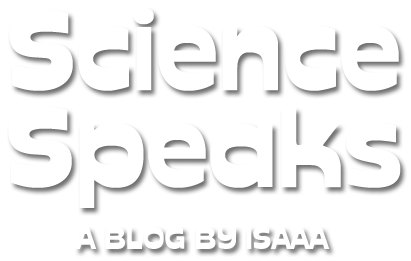ISAAA Inc. and DA Biotech Program Release Fifth Issue of Double Helix Magazine
| |
Double Helix, the Philippines’ first agricultural biotechnology (agbiotech) magazine for senior high school (SHS) students, now has its fifth issue, focusing on biotech products for consumers. Developed by ISAAA Inc., through the Know the Science project with the Philippine Agriculture and Fisheries Biotechnology Program of the Department of Agriculture (DA Biotech Program), this eight-page magazine is filled with illustrated stories, infographics, and activities to promote knowledge and enhance scientific literacy among young people.

In 2022, the maiden issue of the Double Helix magazine was released. The maiden issue explains how crops are genetically engineered using two widely used methods: gene gun and Agrobacterium tumefaciens. This issue also features genetically modified (GM) crops in the Philippines, namely Bt/HT corn, Malusog Rice (also known as Golden Rice), and Bt eggplant. It also contains infographics on the top biotech crops grown across the globe. This issue also features testimonies from Filipino farmers on how planting biotech corn has improved their quality of life.
In the following year, the second issue of Double Helix was released, focusing on gene/genome editing. This issue explains how gene editing works and features two gene editing tools: CRISPR and TALENs. This issue includes current gene editing R&D initiatives in the country, written by Dr. Reynante L. Ordonio, Career Scientist I from the Philippine Rice Research Institute (DA-PhilRice). An article in the magazine also presents the genome-edited products in the market, including CalynoTM High Oleic Soybean Oil, Sicilian Rouge High GABA tomato, “Madai” red sea bream, and the pufferfish “torafugu.”
In 2024, the third issue of Double Helix was published, featuring animal biotechnology. The magazine presents livestock innovations in the Philippine pipeline, written by Dr. Marvin A Villanueva, Scientist I and Chief of the Philippine Carabao Center’s Livestock Biotechnology Center. It also features commercially approved GM and gene-edited animals already available in the market, including Aedes-friendly mosquitoes. The issue also presents an article on AquAdvantage Salmon that was written by Dr. Casiano Choresca, Jr., Scientist I and Center Chief of the National Fisheries Research and Development Institute.
In the same year, the fourth issue of Double Helix was published, discussing the role of biotechnology amidst the challenges of climate change. The magazine contains a backgrounder on climate change written by Dr. Jaime A. Manalo IV, the Head of the Socioeconomics Division of PhilRice. A two-page spread on improved crops for climate change was written by Dr. Gabriel O. Romero, Executive Director of the Philippine Seed Industry Association, Inc. Dr. Ernelea P. Cao, a Professor Emeritus of the Institute of Biology, College of Science, University of the Philippines Diliman, also wrote an article on improved animals for climate change. The magazine includes a one-page infographic on the contributions of biotech crops to food security, sustainability, and climate change solutions.
In 2025, the fifth issue of Double Helix is released, discussing how biotech crops can help address food security challenges and reduce food waste. New products of biotechnology for consumers were featured in the magazine, including the bioengineered pothos, golden lettuce, QCAV-4 banana, and the Yelloway One banana. The magazine also contains an article about cultivated chicken and products of molecular farming, such as real cow milk proteins (casein) made from potatoes, soybeans with pork proteins, pea with beef proteins, and meaty corn. The magazine presents an article featuring reduced-browning products, written by Dr. Gabriel O. Romero, a Consultant at the UK-based NorthHill Group. An infographic on the frequently asked questions (FAQs) on biotechnology was also featured in this issue.
The pages of Double Helix contain links to resources for further reading and QR codes for information materials published on the ISAAA Inc. website. The Double Helix magazine is free to use and download. Interested high schools can get in touch with the ISAAA Inc. team if they want to use the magazine in their instruction.
Download Double Helix magazines and the infographics on biotech FAQs from the ISAAA Inc. website. For inquiries, send an email to double.helix@isaaa.org. Read the following articles for further reading:
- ISAAA Inc. Launches the Philippines’ First Agbiotech Magazine Supplement for Senior High School Students
- New Double Helix Focuses on Gene Editing
- Third Issue of Double Helix Magazine Features Animal Biotechnology
- Fourth Issue of Double Helix Magazine Features Climate Change
| Archive | Older Post |
Science Speaks is ISAAA Inc.'s official blog. Weekly blog articles, authored by ISAAA writers, partners, and invited contributors, aim to help share, disseminate, and promote scientific knowledge and its vital role in achieving global agricultural sustainability and development. Your support to Science Speaks will help us achieve this goal. You can help us by donating as little as $10.

